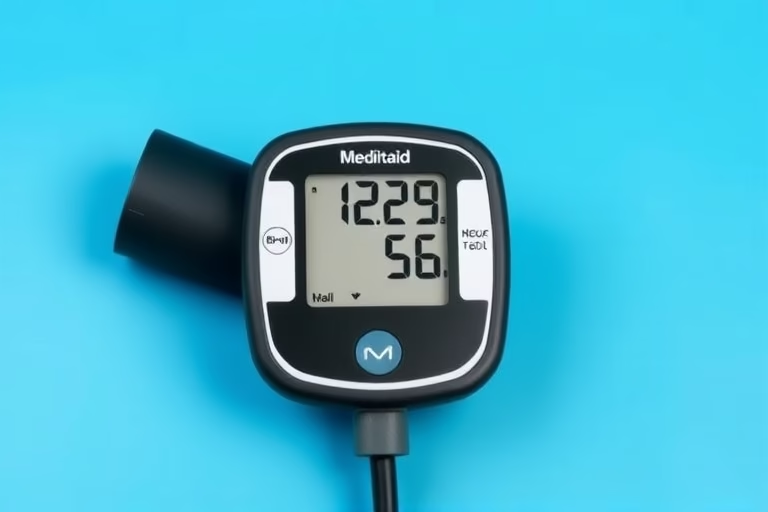We will be talking about whether Medicaid pays for blood pressure monitors. Understanding the relationship between healthcare coverage and essential medical devices such as blood pressure monitors is crucial, especially for individuals managing conditions like hypertension. Blood pressure monitors are important for individuals who require regular monitoring of their blood pressure outside of clinical settings. Many may wonder if Medicaid, a state and federal program designed to help those with limited income access healthcare, covers the cost of these devices. Suffice it to say, the specifics can vary based on the state in which you reside, as Medicaid is administered individually by each state. Additionally, factors such as medical necessity, provider recommendations, and individual health plans can influence coverage. This comprehensive overview will explore various angles concerning Medicaid’s coverage for blood pressure monitors and the implications for individuals who may need them.
Definition of Blood Pressure Monitors
Blood pressure monitors are devices used to measure how effectively the heart is pumping blood throughout the body. Typically used at home or in a healthcare setting, these monitors can be digital or manual. They allow individuals to keep track of their blood pressure readings over time, enabling better management of cardiovascular health. For people diagnosed with hypertension or other heart-related conditions, consistent monitoring is crucial in avoiding potential complications.
Does Medicaid Cover Blood Pressure Monitors?
Medicaid coverage can be complex, and it varies from state to state. Typically, Medicaid may cover blood pressure monitors if they are considered medically necessary. Individuals who have been diagnosed with hypertension and have a prescription from a healthcare provider could be eligible for coverage. It’s essential to consult with your specific state Medicaid program or representative to understand the specifics of what is covered and what documentation might be required. Understanding each state’s guidelines and requirements can help patients navigate obtaining necessary medical devices like blood pressure monitors.
Eligibility Criteria for Medicaid Coverage
To receive Medicaid coverage, individuals must meet specific eligibility requirements based on income, family size, and sometimes health conditions. Each state has slightly different regulations surrounding coverage. Generally, to qualify for Medicaid assistance, individuals must have a low-income status and be a citizen or legal resident. It’s worth noting that factors such as age, disability status, and the presence of chronic illnesses can also impact eligibility. Knowing these criteria assists individuals in determining their potential access to medical equipment like blood pressure monitors.
How to Obtain a Blood Pressure Monitor Through Medicaid
Obtaining a blood pressure monitor through Medicaid involves a few critical steps. Firstly, patients need to visit their healthcare provider to discuss their monitoring needs and obtain a formal prescription. After receiving the prescription, it can be presented to a Medicaid-approved supplier or pharmacy. Additionally, individuals should ensure that they inquire if the device they need is covered under their specific Medicaid plan. Keeping clear communication with both the healthcare provider and Medicaid representatives can facilitate the procurement process.
The Importance of Monitoring Blood Pressure
Monitoring blood pressure is imperative for individuals experiencing hypertension. Regular checks can help detect changes, allowing for quicker responses to treatment modifications. High blood pressure often presents no symptoms, so self-monitoring serves as a proactive measure against potential health complications such as heart attacks or strokes. With conditions worsening without noticeable indicators, incorporating routine check-ups into one’s lifestyle with a blood pressure monitor significantly enhances health management and awareness.
Home Monitoring vs. Clinical Monitoring
Home monitoring provides individuals the advantage of checking their blood pressure in a comfortable setting, promoting adherence to a regular schedule. Clinical monitoring, on the other hand, occurs in healthcare facilities where trained professionals can provide immediate support. Both have their pros and cons, but the convenience of home monitoring often encourages more consistent and accurate tracking of one’s health. By having access to a home blood pressure monitor, patients are more likely to keep their health in check, making it a necessary tool in chronic disease management.
Medicaid and Durable Medical Equipment (DME)
Blood pressure monitors fall under the category of Durable Medical Equipment (DME), which is defined as equipment that is ordered by a physician for medical use. Typically, Medicare and Medicaid may cover DME under certain guidelines, which emphasize that the equipment must be medically necessary and prescribed as part of a treatment plan. Understanding how DME works, including any limitations, can assist patients in maximizing their health coverage while ensuring they have access to necessary monitoring tools for their conditions.
Alternative Resources for Blood Pressure Monitors
If Medicaid does not cover the cost of a blood pressure monitor, there are alternative resources that individuals can explore. Many non-profit organizations assist in providing medical equipment to those in need. Additionally, some pharmacies and health clinics may offer blood pressure monitors for low cost or operating loaner programs for individuals seeking to monitor their blood pressure regularly. Exploring community health resources could aid in obtaining the necessary monitoring equipment without financial burden.
Impact of Unmanaged Hypertension
Unmanaged hypertension can lead to serious health complications including heart disease, stroke, and kidney failure. Awareness of blood pressure levels is crucial for preventive health measures. Implementing lifestyle adjustments, including diet, exercise, and stress management, combined with consistent monitoring can greatly reduce the risks associated with high blood pressure. Individuals are encouraged to be proactive in managing their health conditions to mitigate the effects of unmanaged hypertension.
Future of Blood Pressure Monitoring with Technology
Technological advancements are changing how patients monitor their blood pressure. New devices that can sync with smartphones and track readings over time in digital formats are revolutionizing personal health management. Remote monitoring options, especially pertinent following the COVID-19 pandemic, allow for patient data to be shared with healthcare providers, leading to collaborative health decisions and better health outcomes. Understanding the evolution of blood pressure monitoring can help patients prepare for future options and innovations that might benefit their health.
In conclusion, the inquiry into whether Medicaid pays for blood pressure monitors brings to light several critical aspects of healthcare access and management. The relationship between health insurance programs such as Medicaid and the provision of necessary medical equipment can directly impact patients’ ability to manage their health effectively. Ensuring that one understands eligibility requirements, the procurement process, and the importance of monitoring blood pressure can empower individuals to take charge of their wellness. With the prevalence of hypertension and its associated risks, knowledge around the financial assists provided by Medicaid can help those in need acquire essential monitoring tools. Healthcare providers and policymakers continue to play a pivotal role in creating access pathways for those who require medical devices like blood pressure monitors for better health management.
Frequently Asked Questions
- What is a blood pressure monitor?
A blood pressure monitor is a device used to measure blood pressure, an important indicator of cardiovascular health. - Are blood pressure monitors covered by Medicaid?
Medicaid may cover the cost of blood pressure monitors if determined medically necessary and prescribed by a healthcare provider. - What are the eligibility requirements for Medicaid?
Eligibility varies but generally includes low income, residency status, and certain health conditions. - How can I obtain a blood pressure monitor through Medicaid?
Seek a prescription from a healthcare provider, then find a Medicaid-approved supplier to obtain the monitor. - What are the risks of unmanaged hypertension?
Unmanaged hypertension can lead to serious health issues, including heart disease, stroke, and kidney failure. Regular monitoring is essential.
Further Reading
What Type of Psychotherapy Is Best for Anxiety?







